Detailed Report: Understanding Key Macroeconomic Variables
VerifiedAdded on 2023/06/08
|6
|801
|331
Report
AI Summary
This report provides an overview of key macroeconomic variables and their impact on the economy. It discusses variables such as Real GDP, inflation rate, unemployment rate, and interest rates, explaining how they reflect the pulse of economic activities. The report also examines the concepts of aggregate demand and aggregate supply, detailing their components and formulas. Furthermore, it explores key economic indicators, including leading and lagging indicators, and their roles in analyzing and predicting economic performance. The conclusion emphasizes the significance of macroeconomic variables in a country's performance and the need for businesses to understand their effects for future planning. Desklib provides students access to similar solved assignments and study tools.
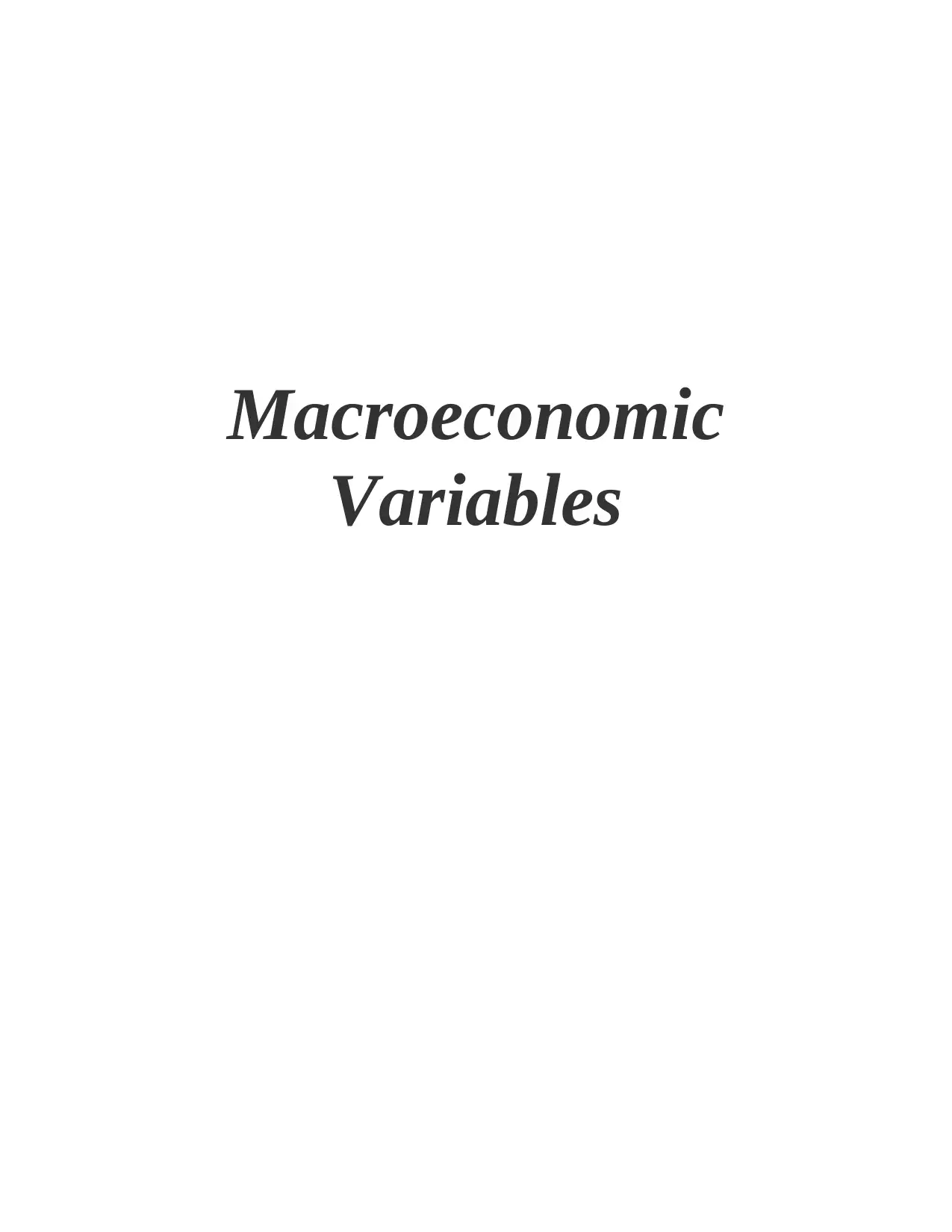
Macroeconomic
Variables
Variables
Paraphrase This Document
Need a fresh take? Get an instant paraphrase of this document with our AI Paraphraser
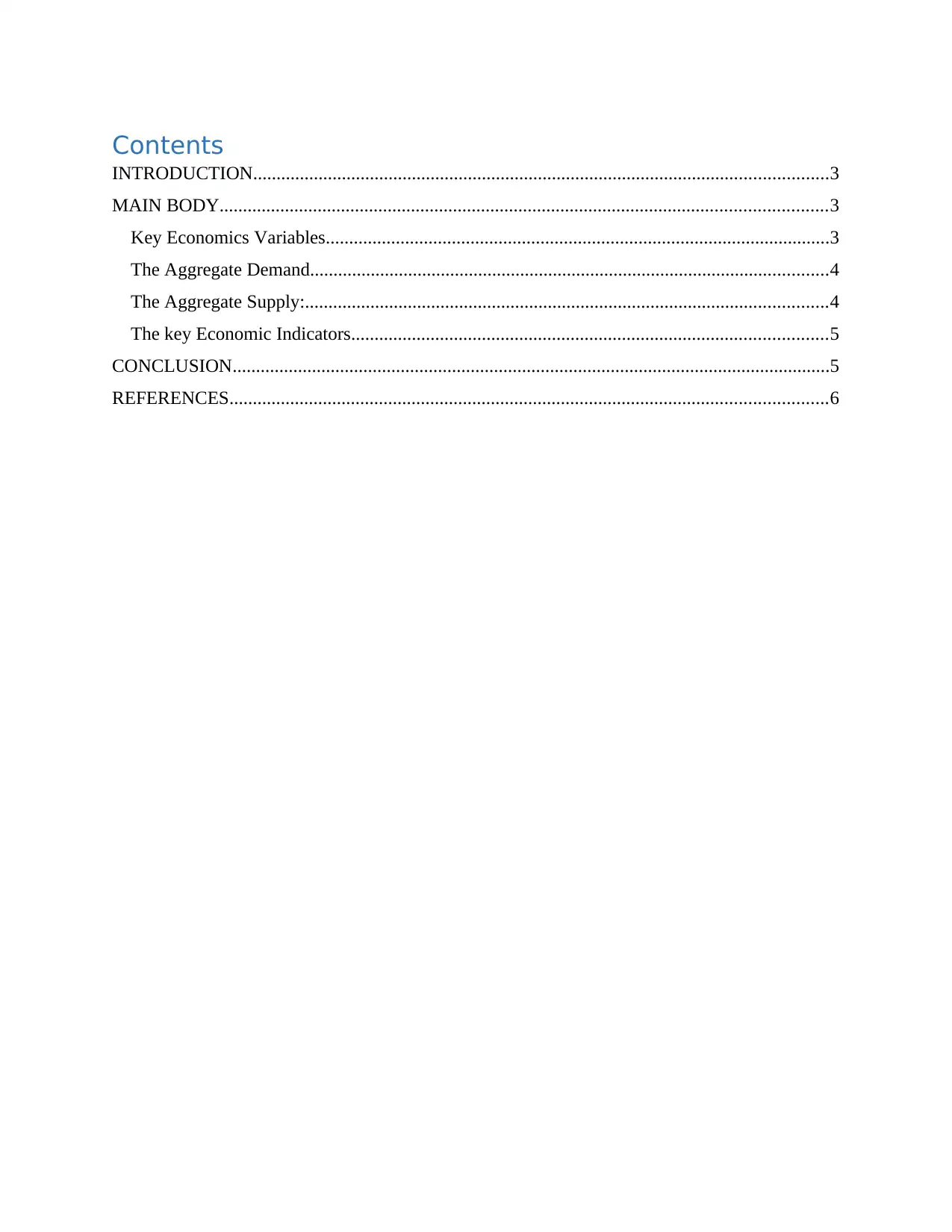
Contents
INTRODUCTION...........................................................................................................................3
MAIN BODY..................................................................................................................................3
Key Economics Variables............................................................................................................3
The Aggregate Demand...............................................................................................................4
The Aggregate Supply:................................................................................................................4
The key Economic Indicators......................................................................................................5
CONCLUSION................................................................................................................................5
REFERENCES................................................................................................................................6
INTRODUCTION...........................................................................................................................3
MAIN BODY..................................................................................................................................3
Key Economics Variables............................................................................................................3
The Aggregate Demand...............................................................................................................4
The Aggregate Supply:................................................................................................................4
The key Economic Indicators......................................................................................................5
CONCLUSION................................................................................................................................5
REFERENCES................................................................................................................................6
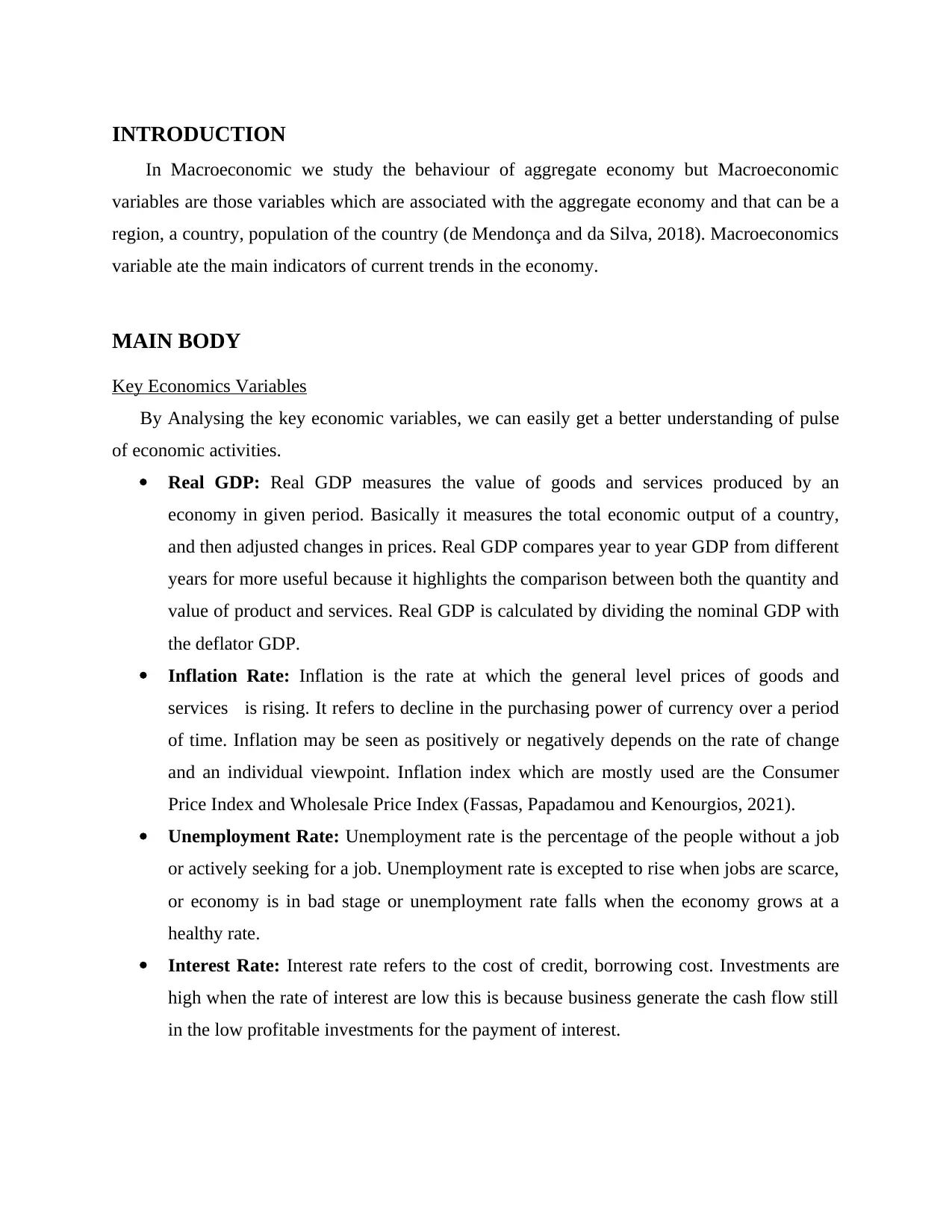
INTRODUCTION
In Macroeconomic we study the behaviour of aggregate economy but Macroeconomic
variables are those variables which are associated with the aggregate economy and that can be a
region, a country, population of the country (de Mendonça and da Silva, 2018). Macroeconomics
variable ate the main indicators of current trends in the economy.
MAIN BODY
Key Economics Variables
By Analysing the key economic variables, we can easily get a better understanding of pulse
of economic activities.
Real GDP: Real GDP measures the value of goods and services produced by an
economy in given period. Basically it measures the total economic output of a country,
and then adjusted changes in prices. Real GDP compares year to year GDP from different
years for more useful because it highlights the comparison between both the quantity and
value of product and services. Real GDP is calculated by dividing the nominal GDP with
the deflator GDP.
Inflation Rate: Inflation is the rate at which the general level prices of goods and
services is rising. It refers to decline in the purchasing power of currency over a period
of time. Inflation may be seen as positively or negatively depends on the rate of change
and an individual viewpoint. Inflation index which are mostly used are the Consumer
Price Index and Wholesale Price Index (Fassas, Papadamou and Kenourgios, 2021).
Unemployment Rate: Unemployment rate is the percentage of the people without a job
or actively seeking for a job. Unemployment rate is excepted to rise when jobs are scarce,
or economy is in bad stage or unemployment rate falls when the economy grows at a
healthy rate.
Interest Rate: Interest rate refers to the cost of credit, borrowing cost. Investments are
high when the rate of interest are low this is because business generate the cash flow still
in the low profitable investments for the payment of interest.
In Macroeconomic we study the behaviour of aggregate economy but Macroeconomic
variables are those variables which are associated with the aggregate economy and that can be a
region, a country, population of the country (de Mendonça and da Silva, 2018). Macroeconomics
variable ate the main indicators of current trends in the economy.
MAIN BODY
Key Economics Variables
By Analysing the key economic variables, we can easily get a better understanding of pulse
of economic activities.
Real GDP: Real GDP measures the value of goods and services produced by an
economy in given period. Basically it measures the total economic output of a country,
and then adjusted changes in prices. Real GDP compares year to year GDP from different
years for more useful because it highlights the comparison between both the quantity and
value of product and services. Real GDP is calculated by dividing the nominal GDP with
the deflator GDP.
Inflation Rate: Inflation is the rate at which the general level prices of goods and
services is rising. It refers to decline in the purchasing power of currency over a period
of time. Inflation may be seen as positively or negatively depends on the rate of change
and an individual viewpoint. Inflation index which are mostly used are the Consumer
Price Index and Wholesale Price Index (Fassas, Papadamou and Kenourgios, 2021).
Unemployment Rate: Unemployment rate is the percentage of the people without a job
or actively seeking for a job. Unemployment rate is excepted to rise when jobs are scarce,
or economy is in bad stage or unemployment rate falls when the economy grows at a
healthy rate.
Interest Rate: Interest rate refers to the cost of credit, borrowing cost. Investments are
high when the rate of interest are low this is because business generate the cash flow still
in the low profitable investments for the payment of interest.
⊘ This is a preview!⊘
Do you want full access?
Subscribe today to unlock all pages.

Trusted by 1+ million students worldwide
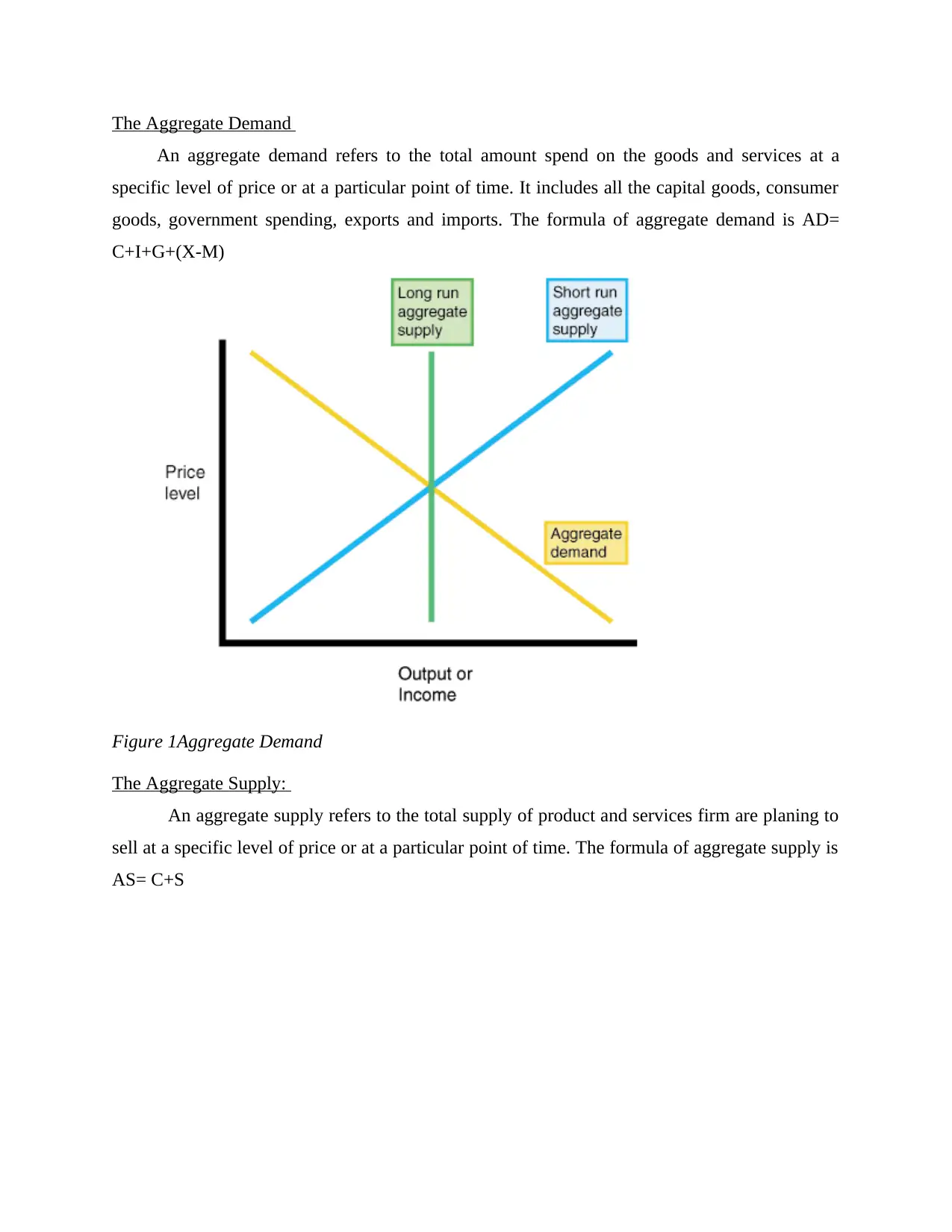
The Aggregate Demand
An aggregate demand refers to the total amount spend on the goods and services at a
specific level of price or at a particular point of time. It includes all the capital goods, consumer
goods, government spending, exports and imports. The formula of aggregate demand is AD=
C+I+G+(X-M)
Figure 1Aggregate Demand
The Aggregate Supply:
An aggregate supply refers to the total supply of product and services firm are planing to
sell at a specific level of price or at a particular point of time. The formula of aggregate supply is
AS= C+S
An aggregate demand refers to the total amount spend on the goods and services at a
specific level of price or at a particular point of time. It includes all the capital goods, consumer
goods, government spending, exports and imports. The formula of aggregate demand is AD=
C+I+G+(X-M)
Figure 1Aggregate Demand
The Aggregate Supply:
An aggregate supply refers to the total supply of product and services firm are planing to
sell at a specific level of price or at a particular point of time. The formula of aggregate supply is
AS= C+S
Paraphrase This Document
Need a fresh take? Get an instant paraphrase of this document with our AI Paraphraser
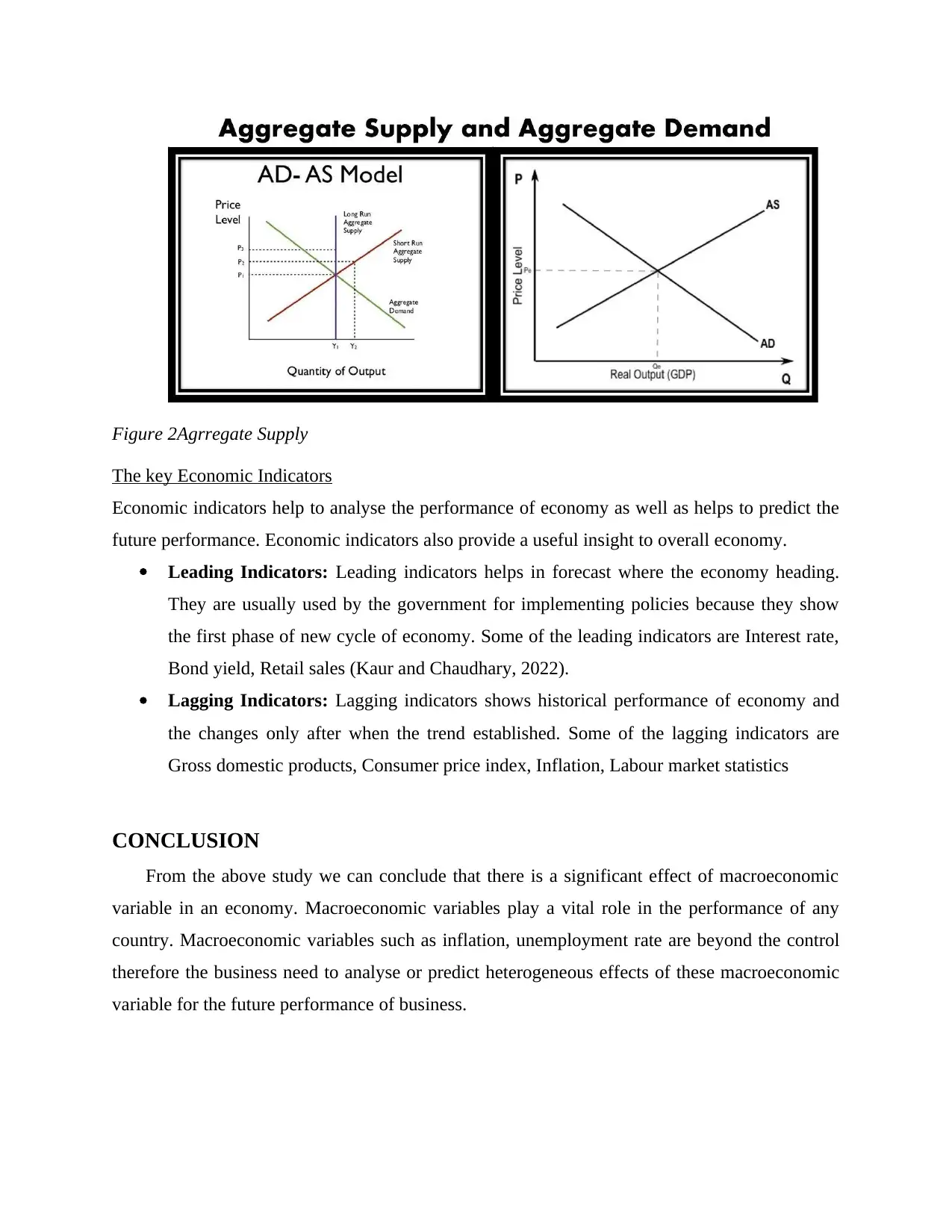
Figure 2Agrregate Supply
The key Economic Indicators
Economic indicators help to analyse the performance of economy as well as helps to predict the
future performance. Economic indicators also provide a useful insight to overall economy.
Leading Indicators: Leading indicators helps in forecast where the economy heading.
They are usually used by the government for implementing policies because they show
the first phase of new cycle of economy. Some of the leading indicators are Interest rate,
Bond yield, Retail sales (Kaur and Chaudhary, 2022).
Lagging Indicators: Lagging indicators shows historical performance of economy and
the changes only after when the trend established. Some of the lagging indicators are
Gross domestic products, Consumer price index, Inflation, Labour market statistics
CONCLUSION
From the above study we can conclude that there is a significant effect of macroeconomic
variable in an economy. Macroeconomic variables play a vital role in the performance of any
country. Macroeconomic variables such as inflation, unemployment rate are beyond the control
therefore the business need to analyse or predict heterogeneous effects of these macroeconomic
variable for the future performance of business.
The key Economic Indicators
Economic indicators help to analyse the performance of economy as well as helps to predict the
future performance. Economic indicators also provide a useful insight to overall economy.
Leading Indicators: Leading indicators helps in forecast where the economy heading.
They are usually used by the government for implementing policies because they show
the first phase of new cycle of economy. Some of the leading indicators are Interest rate,
Bond yield, Retail sales (Kaur and Chaudhary, 2022).
Lagging Indicators: Lagging indicators shows historical performance of economy and
the changes only after when the trend established. Some of the lagging indicators are
Gross domestic products, Consumer price index, Inflation, Labour market statistics
CONCLUSION
From the above study we can conclude that there is a significant effect of macroeconomic
variable in an economy. Macroeconomic variables play a vital role in the performance of any
country. Macroeconomic variables such as inflation, unemployment rate are beyond the control
therefore the business need to analyse or predict heterogeneous effects of these macroeconomic
variable for the future performance of business.
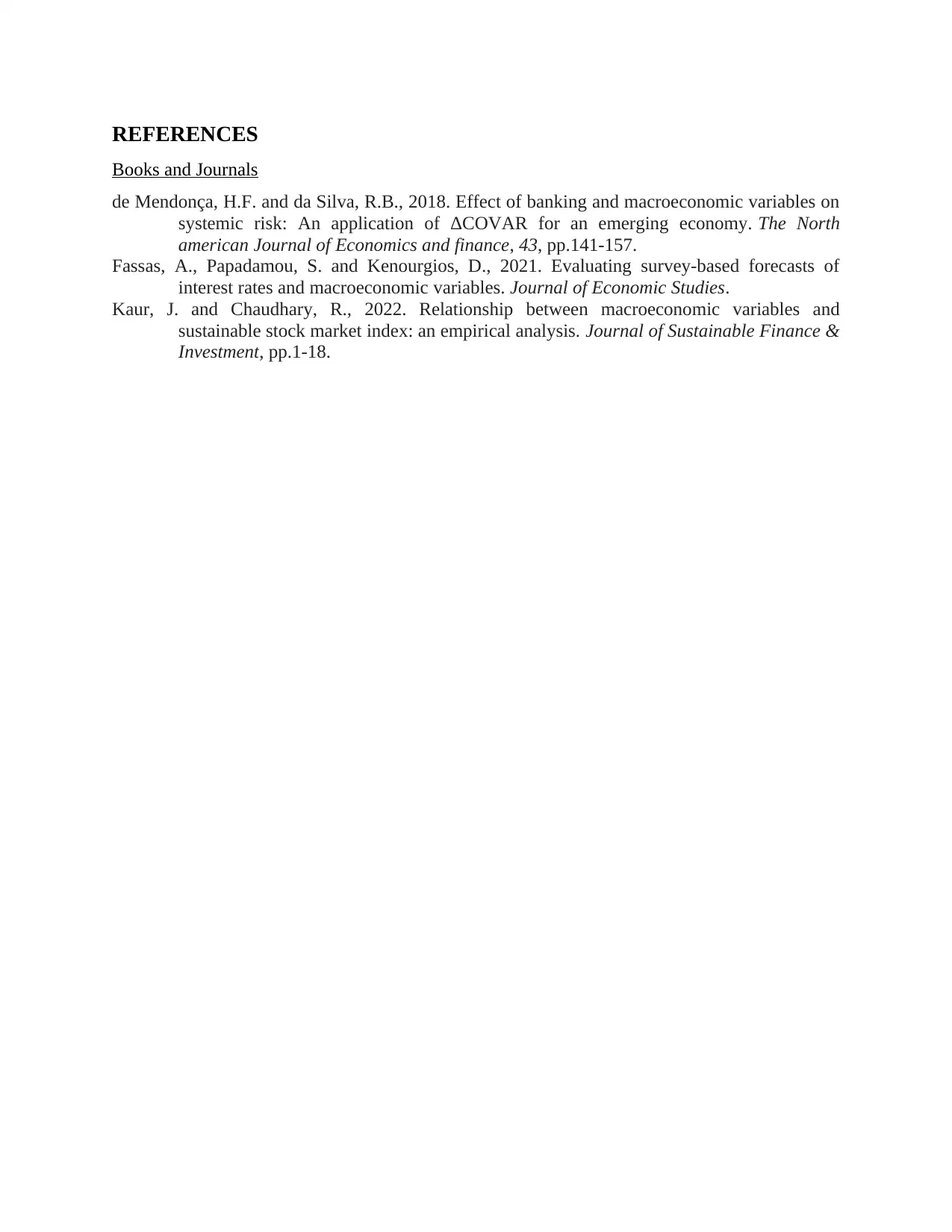
REFERENCES
Books and Journals
de Mendonça, H.F. and da Silva, R.B., 2018. Effect of banking and macroeconomic variables on
systemic risk: An application of ΔCOVAR for an emerging economy. The North
american Journal of Economics and finance, 43, pp.141-157.
Fassas, A., Papadamou, S. and Kenourgios, D., 2021. Evaluating survey-based forecasts of
interest rates and macroeconomic variables. Journal of Economic Studies.
Kaur, J. and Chaudhary, R., 2022. Relationship between macroeconomic variables and
sustainable stock market index: an empirical analysis. Journal of Sustainable Finance &
Investment, pp.1-18.
Books and Journals
de Mendonça, H.F. and da Silva, R.B., 2018. Effect of banking and macroeconomic variables on
systemic risk: An application of ΔCOVAR for an emerging economy. The North
american Journal of Economics and finance, 43, pp.141-157.
Fassas, A., Papadamou, S. and Kenourgios, D., 2021. Evaluating survey-based forecasts of
interest rates and macroeconomic variables. Journal of Economic Studies.
Kaur, J. and Chaudhary, R., 2022. Relationship between macroeconomic variables and
sustainable stock market index: an empirical analysis. Journal of Sustainable Finance &
Investment, pp.1-18.
⊘ This is a preview!⊘
Do you want full access?
Subscribe today to unlock all pages.

Trusted by 1+ million students worldwide
1 out of 6
Related Documents
Your All-in-One AI-Powered Toolkit for Academic Success.
+13062052269
info@desklib.com
Available 24*7 on WhatsApp / Email
![[object Object]](/_next/static/media/star-bottom.7253800d.svg)
Unlock your academic potential
Copyright © 2020–2025 A2Z Services. All Rights Reserved. Developed and managed by ZUCOL.



